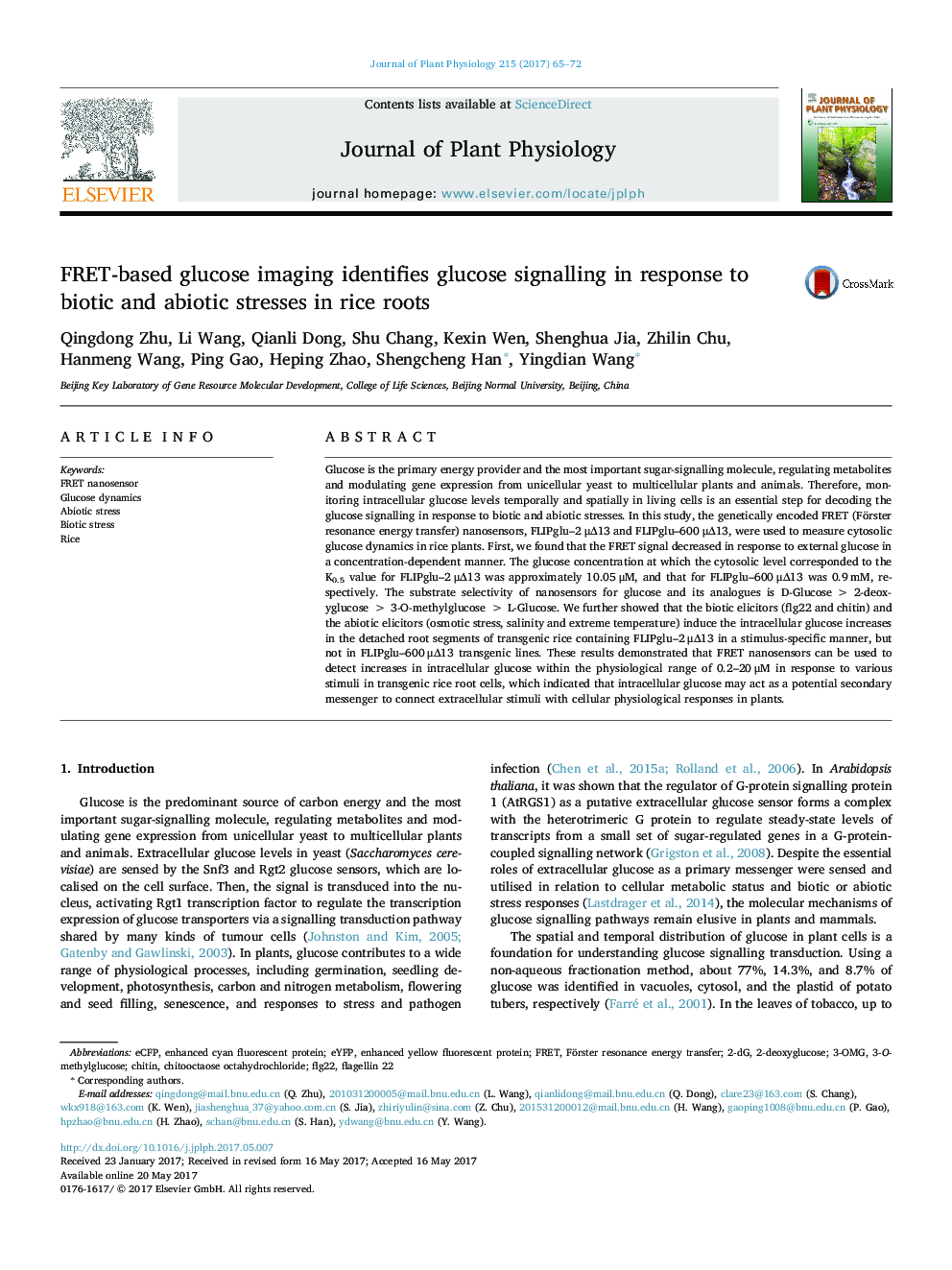| Article ID | Journal | Published Year | Pages | File Type |
|---|---|---|---|---|
| 5517998 | Journal of Plant Physiology | 2017 | 8 Pages |
Glucose is the primary energy provider and the most important sugar-signalling molecule, regulating metabolites and modulating gene expression from unicellular yeast to multicellular plants and animals. Therefore, monitoring intracellular glucose levels temporally and spatially in living cells is an essential step for decoding the glucose signalling in response to biotic and abiotic stresses. In this study, the genetically encoded FRET (Förster resonance energy transfer) nanosensors, FLIPglu-2 μâ13 and FLIPglu-600 μÎ13, were used to measure cytosolic glucose dynamics in rice plants. First, we found that the FRET signal decreased in response to external glucose in a concentration-dependent manner. The glucose concentration at which the cytosolic level corresponded to the K0.5 value for FLIPglu-2 μÎ13 was approximately 10.05 μM, and that for FLIPglu-600 μÎ13 was 0.9 mM, respectively. The substrate selectivity of nanosensors for glucose and its analogues is D-Glucose > 2-deoxyglucose > 3-O-methylglucose > L-Glucose. We further showed that the biotic elicitors (flg22 and chitin) and the abiotic elicitors (osmotic stress, salinity and extreme temperature) induce the intracellular glucose increases in the detached root segments of transgenic rice containing FLIPglu-2 μÎ13 in a stimulus-specific manner, but not in FLIPglu-600 μÎ13 transgenic lines. These results demonstrated that FRET nanosensors can be used to detect increases in intracellular glucose within the physiological range of 0.2-20 μM in response to various stimuli in transgenic rice root cells, which indicated that intracellular glucose may act as a potential secondary messenger to connect extracellular stimuli with cellular physiological responses in plants.
